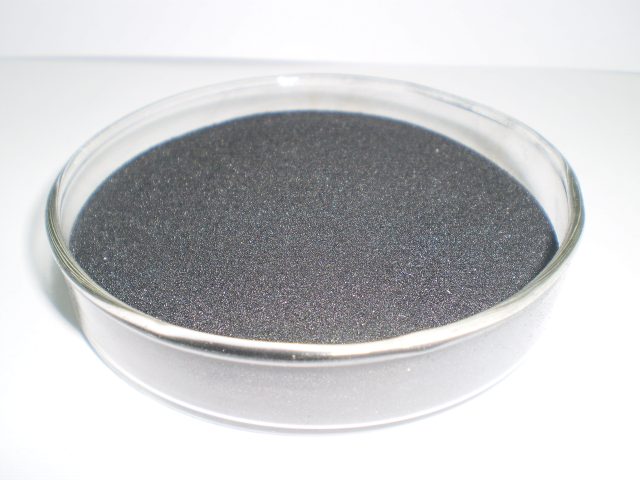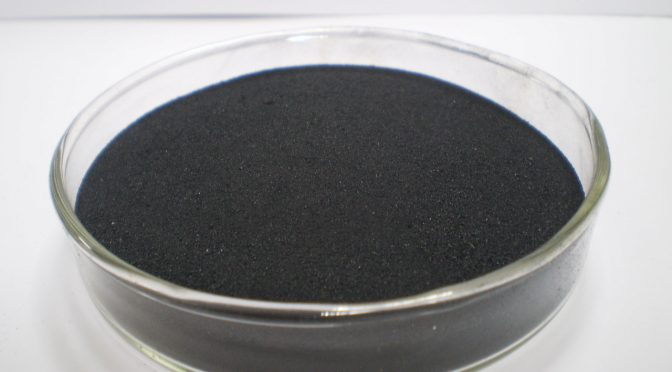Humic acid is a plant and animal remains, mainly plant remains, a type of organic matter produced and accumulated by microbial decomposition and transformation, and a series of geochemical processes. Its total amount is astonishingly large, counting trillions of tons. Rivers, lakes and seas, soil coal mines, most of them have traces on the surface. Because of its wide existence, it has a great impact on the earth, involving carbon cycle, mineral migration accumulation, soil fertility, and ecological balance. The total amount of humic acid contained in the soil is the largest, but the content in the soil is less than one percent on average, and the total amount contained in the brackish water is not small, but the concentration is lower.
Humic acid is a bioactive organism. An organic carrier composed of a plurality of functional groups is also an intermediate substance having a metabolic function of plant respiration and photosynthesis, so that it has a large capacity and can be combined with various substances. Humic acid and pesticides are mainly combined by means of ionic bond, hydrogen bond, proton transfer, electron transfer, complexation, etc., and a new type of pesticide polymer complex is produced. This is humic acid environmental protection pesticide. Research and practice have shown that humic acid can be combined with insecticides, fungicides and herbicides to enhance the efficacy and reduce toxicity.
The specific performance is:
—— Solubilization: Humic acid can act as a surfactant. The surface tension of the metal salt is lower than the surface tension of water. It can produce obvious dispersion and emulsification effects on pesticides and improve the solubility of soluble pesticides.
—— synergism: humic acid can enhance the absorption of pesticides by plants, improve the biological activity of pesticides and plant growth regulators, and significantly improve the effects of pesticides;
——Slow release effect: Humic acid has a significant inhibitory effect on the decomposition rate of pesticides, and the greater the amount of humic acid, the slower the speed;
- Detoxification: Humic acid can inactivate the activity of pesticide-toxic enzymes in organisms, stimulate the activity of enzymes that antagonize pesticides, and alleviate and reduce the toxicity of pesticides.
As a new type of fertilizer, organic-inorganic compound fertilizer is becoming the development direction of ecological agriculture fertilizer in the 21st century. Here we mainly discuss the application of humic acid in the fertilizer in agriculture.
A. The use of humic acid can change the physicochemical properties of soil with high salt content, excessive alkalinity, high soil particle dispersion and poor soil structure, promote the formation of soil aggregates, and make it into a good state, thus plant root growth. Development creates good conditions.
B. Application of humic acid can loosen the soil of the ploughed soil, destroy the accumulation of salt, reduce the salt content of the topsoil, play a role of salt separation, increase the emergence rate, reduce weak seedlings, dead seedlings, and make plants grow healthily.
C. Humic acid has a high cation conversion amount, which is more than 10 times higher than that of ordinary soil. After being applied to the soil, the adsorption capacity of the soil to the anions is significantly increased, and the surface salt content is reduced.
D. The pH value of saline-alkali land, especially alkaline soil, is too high (above 9.0), which directly harms crop growth and even causes death. In addition, the high pH value also affects the phosphorus, iron, manganese, boron, zinc and other nutrients in the soil. Effectiveness. The pH value of humic acid is 6.8, which can neutralize alkaline, reduce the damage of alkaline to soil and plants, improve the low-yield saline-alkali land, and create good soil conditions for crop seedling growth.
Detailed explanation:
1. Effects on soil microbial flora and enzyme activities
Soil microbes are one of the important reasons for the composition of soil. They have an important influence on the transformation of soil organic and inorganic matter, the circulation of nutrients, and the formation of bioactive substances, an enzyme, which are indispensable in the process of plant life. The fact that humic acid can promote soil microbial activities, increase the number of soil microbes, and enhance the activity of soil enzymes has been confirmed by a large number of research data at home and abroad. It is also agreed that the application of humic acid makes aerobic bacteria, actinomycetes, and fibers. The number of decomposing bacteria increased more. It is beneficial to accelerate the mineralization of organic matter and promote the release of nutrients. Therefore, the application of humic acid can control the root disease, yellow leaves, leaflets and blight of fruit trees.
- Humic acid has synergistic effect on chemical fertilizer and micro-fertilizer
With the rapid development of China’s chemical industry, the production and application of chemical fertilizers continue to increase, and the application of chemical fertilizers has undoubtedly played an important role in the development of agricultural production, but with the increase in the application of chemical fertilizers, the cost of fertilizers has increased. Problems such as lowering the rate are gradually reflected. At present, the interest rate of nitrogen fertilizer in China is 30-50%, the utilization rate of phosphate fertilizer is 10-20%, and the utilization rate of potassium fertilizer is 50-70%. How to improve the utilization rate of fertilizer has become a research topic that the world attaches great importance to. There are many ways to increase the utilization rate of chemical fertilizers. At present, the most effective result is to use biologically active additives to activate humic acid, enhance its chemical activities and biological activities such as chemical, adsorption, chelation, microbial reproduction, etc. to effectively improve the utilization rate of chemical fertilizers.
- The effect of humic acid on the growth and development of crops
Humic acid contains a variety of functional groups, and the activated humic acid becomes a highly effective biologically active substance, which has a stimulating effect on crop growth and physiological metabolism in the body. This characteristic is not possessed by common fertilizers, and the activated humic acid has high bioactivity. Substances are soaked in a certain concentration, soaked in roots, rooted, sprayed, watered, and made as a base fertilizer, which have obvious stimulating effects on various crops. The comprehensive performance is in the promotion of root development, and has a good influence on crop yield and quality factors.
A. Early germination, high emergence rate
The application of humic acid can accelerate seed germination and increase the emergence rate, especially in early spring and low temperature (generally germination 1 to 3 days earlier, and the emergence rate is increased by 10 to 30%).
B. The root system is developed and the absorption is strong.
Humic acid has a special promoting effect on the root development of crops. Many agricultural personnel call humic acid a “root fertilizer”. The effect on roots is mainly to stimulate the division and growth of root meristem cells and make seedling roots. Fast, secondary roots increase, roots increase, root elongation, and ultimately the ability of crops to absorb water and nutrients is greatly enhanced.
C. Effects on the growth of above-ground vegetative bodies
On the basis of sufficient nutrient supply, the stimulating effect of humic acid can make the above-ground part of the vegetative body grow vigorously. It is manifested in plant height, stem diameter, number of leaves and accumulation of dry matter.
D. Impact on production and composition factors
Humic acid has different yield and composition factors for different crops. It has a good effect on grain crops, spikes, grains and 1000-grain weight. It has good effects on tillering and reducing openness in the early stage.
- Effects on crop physiological metabolism and enzyme activities
When humic acid enters the plant, it stimulates the plant, mainly in the increase of respiratory intensity. The increase of photosynthesis, the activity of various enzymes is enhanced, so that the fruit is colored and matured in advance, and high yield and high value are obtained (economic crops) Should be marketable).
- Improve crop drought resistance
The application of humic acid can reduce the stomata opening degree of the plant leaves, reduce the transpiration of the leaves, reduce the water consumption, improve the water condition of the plants, and increase the water content of the leaves. This lays a foundation for the ear and the seed, and the humic acid Application can also increase the content of chlorophyll and the normal progress of photosynthesis, and is very important for the accumulation of substances and the increase of 1000-grain weight.
- Enhance the cold resistance of crops
The application of humic acid has obvious effects on early spring breeding in the south and cold resistance in northern wheat. In the south of China, early rice cultivation, often encounters low temperature and rainy weather, often occurs dead seedlings, rotten seedlings, the application of humic acid, the ground temperature is improved, the quality of seedlings generally improved. Southwest Agricultural University found that winter wheat in most parts of northern China, due to frequent cold springs, wheat seedlings are generally affected by winter damage, the application of humic acid, effectively improve the cold resistance of wheat, and reduce the freezing damage to varying degrees.
- Control plant diseases and insect pests and immunity
Humic acid can effectively control underground pests and diseases and plant diseases and pathogens. According to a large number of research experiments in Beijing, Sichuan and Jiangxi, humic acid has obvious effects on the control of fruit tree rot, leaflet, yellow leaf disease, cucumber downy mildew, pepper anthracnose and viral disease, Shanxi. The two-year cucumber test of the Xinyi Vegetable Research Institute showed that the application of humic acid did not use any pesticides, but the cucumber did not have any major pests and diseases from beginning to end.
Since the first humic acid has been obtained from the soil in 1786, it has been more than 200 years old. The first to pay attention to and study humic acid is the soil scientist. If the “Wu Jin San” compiled by Li Shizhen’s “Compendium of Materia Medica” in the Ming Dynasty’s famous medical scientist in the Ming Dynasty is a case, the application of humic acid has been used for more than 400 years, which fully illustrates the humic acid. Ancient history.
At present, the country is determined to control the ecological environment and improve people’s production and lifestyle, which provides a big stage for the development and application of humic acid. Because humic acid has special functions, it will play its unique role in sand control, soil improvement, urban sewage treatment, ecological agriculture construction, production of green, organic products, development of medicines, and health care products.



